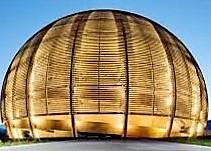Speaker
Description
Obtaining reliable cross sections for neutron-induced reactions on unstable nuclei nuclei is crucial to our understanding of the stellar nucleosynthesis of heavy elements. However, the measurement of these cross sections is very complicated as both projectile and target are radioactive. The NECTAR (NuclEar reaCTions At storage Rings) project aims to circumvent these problems by using the surrogate-reaction method in inverse kinematics. A heavy, radioactive nucleus in the beam is to interact with a light, stable nucleus in the target to produce the compound nucleus formed in the neutron-induced reaction of interest via an alternative or surrogate reaction such as transfer or inelastic scattering. This compound nucleus may decay by fission, neutron or gamma-ray emission, and the probabilities for these modes of decay are to be measured as a function of the excitation energy of the compound nucleus. This information is used to constrain model parameters and to inform much more accurate predictions of neutron-induced reaction cross sections [1].
Yet, the full development of the surrogate method is hampered by the numerous long-standing target issues. The objective of the NECTAR project is to solve these issues by combining surrogate reactions with the unique and largely unexplored possibilities at heavy-ion storage rings. In a storage ring, heavy radioactive ions revolve at high frequency passing repeatedly through an electron cooler, which will greatly improve the beam quality and restore it after each passage of the beam through the internal gas-jet serving as ultra-thin, windowless target. This way, excitation energy and decay probabilities can be measured with unrivaled accuracy.
In this contribution, we will present the conceptual idea of the setup, which is being developed within NECTAR to measure for the first time simultaneously the fission, neutron and gamma-ray emission probabilities at the storage rings of the GSI/FAIR facility. We will also discuss the technical developments that are being carried out towards these measurements, in particular we will present the first results of the proof of principle experiment, which will be conducted in June 2022 at the ESR storage ring of GSI/FAIR.
[1] R. Pérez Sánchez, B. Jurado et al., Phys. Rev. Lett. 125 (2020) 122502
*Acknowledgment: This work has received funding from the European Research Council (ERC) under the European Union’s Horizon 2020 research and innovation programme (ERC-Advanced grant NECTAR, grant agreement No 884715).
